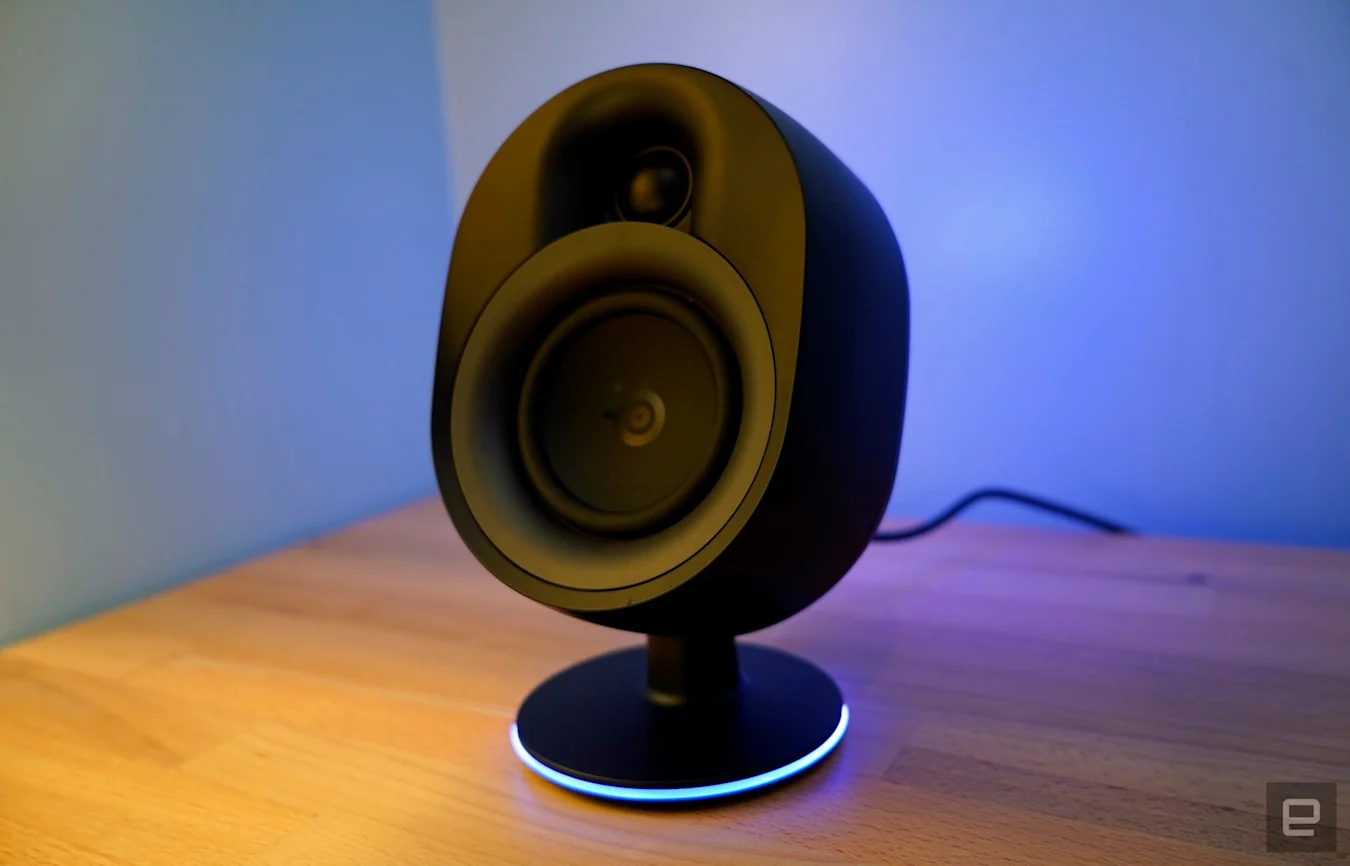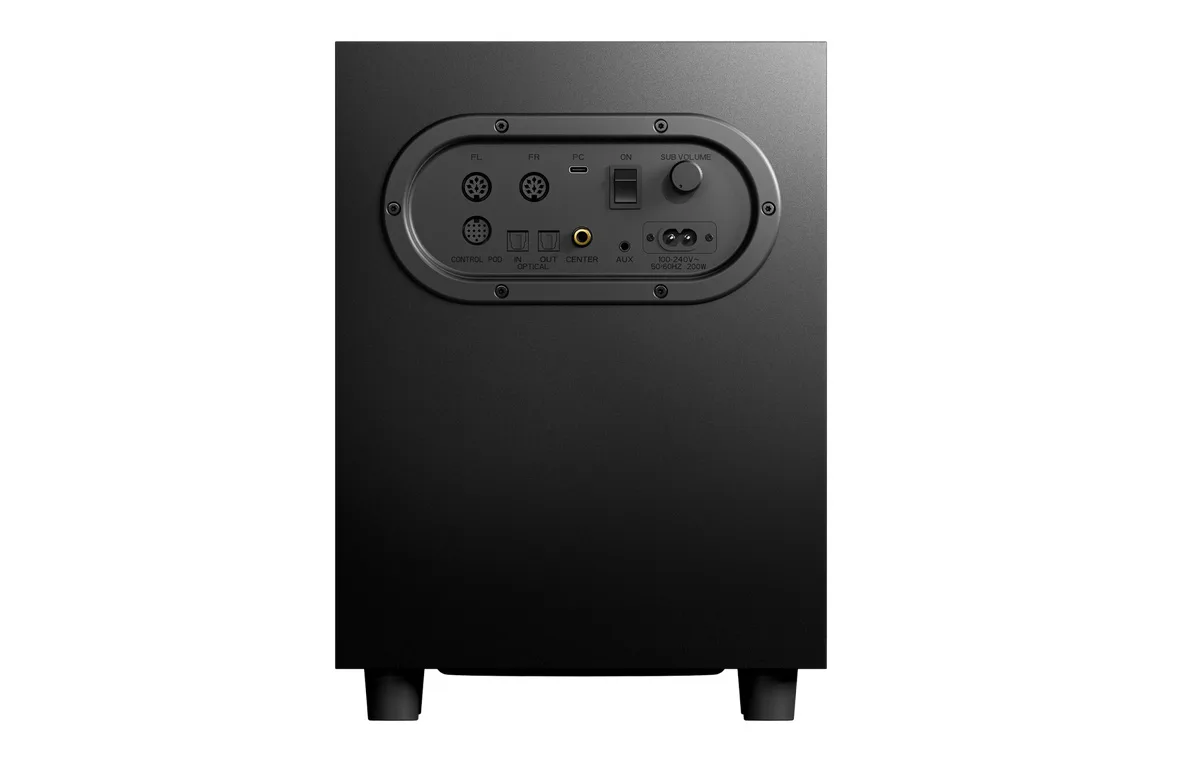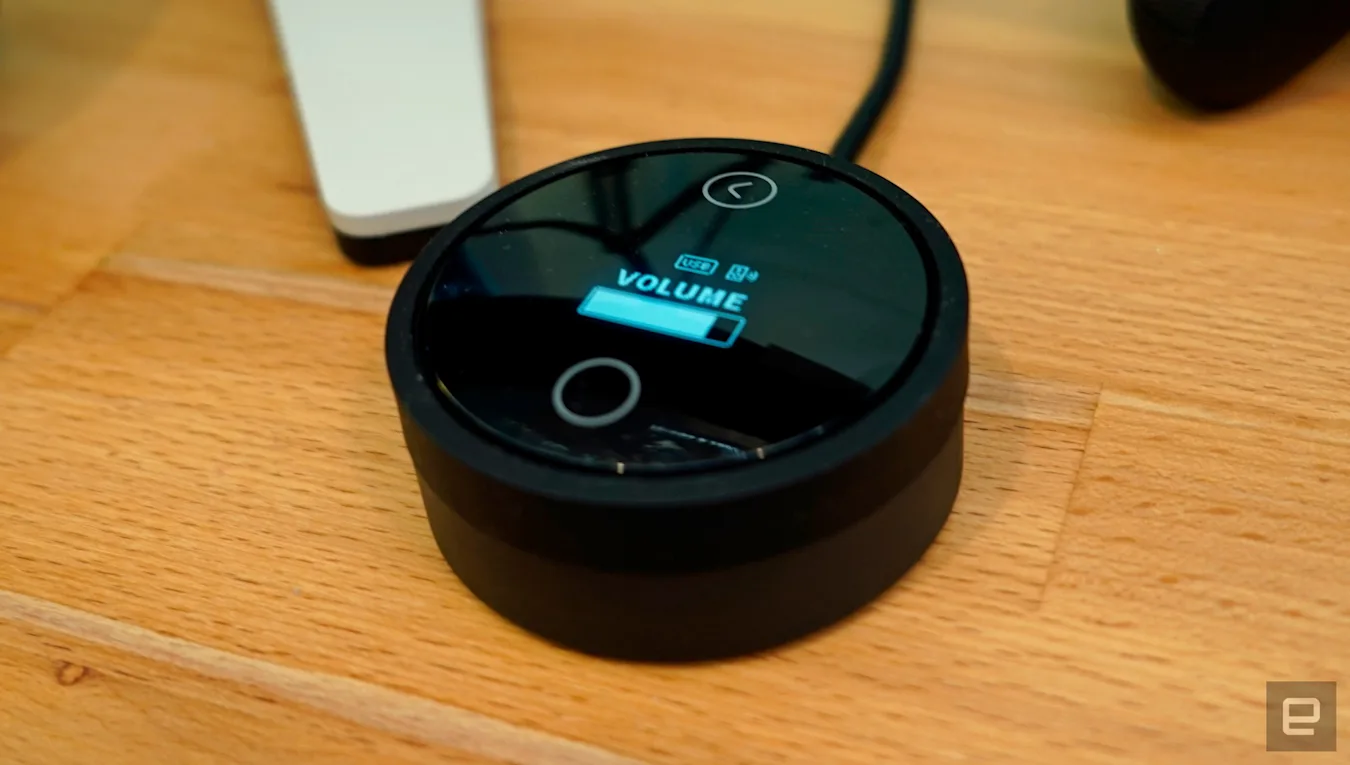SteelSeries Arena 9 review: Bringing 5.1 surround sound back to gaming PCs
Once upon a time, desktop computer speakers actually mattered. That was more than a decade ago, long before gaming headsets filled the land and wireless Bluetooth headphones were any good. In the early 2000’s, more people also had actual desktops computers chained to desks, so it was worth investing a bit in decent audio. SteelSeries’ new Arena 9 surround sound PC speakers reminds me of that era, a time when I eagerly strung cables throughout my dorm room to connect Logitech’s legendary Z-680 surround sound speakers. (Apologies for anyone who lived near me. I tried to keep things civil, I swear!)
Luckily, it’s not as tough to go surround sound today – though it will still cost you a ton. The $550 Arena 9 connect over USB, so you don’t have to worry about a specialized sound card, and they feature wireless rear satellites, which only need to be connected to power and each other. There’s no need to string anything to the front speakers. That solves a huge pain point, and it makes the Arena 9 a far more viable option for the cable-averse. But is setting up a surround sound system worth it when gaming headphones are cheaper, more immersive and kinder to your neighbors? You’ll have to decide that for yourself.
Pros
- Excellent two-way speaker design
- Fantastic sound quality for gaming and movies
- Convenient wireless rears
- Bluetooth support
Cons
- Built-in speaker cables may be hard to fix
- Subwoofer is small for a system this size
- No onboard surround sound processing
- No 5.1 surround for PS5
- Average build quality
Assuming you do want to fill your room with speakers, the Arena 9 are notable for existing at all. There aren’t many PC alternatives today, and they’re mostly several years old, like Logitech’s Z906 (released in 2011). You could, of course, set up an amplifier and connect whatever speakers you’d like, but anyone doing that probably isn’t in the market for a self-contained kit. SteelSeries is striking a delicate balance between complexity and convenience – for the most part, I think the Arena 9 is a success.

Devindra Hardawar/Engadget
In the box, you’ll find two front speakers (both equipped with RGB lighting along their base and rears), two wireless rear satellites, a center channel, a control module, and a 6.5-inch downward-firing subwoofer. The two-way speakers don’t exactly feel high-end, but their matte plastic casing should blend in with your keyboards and other PC components. They’re also far lighter than I expected, which is rarely a good sign with audio gear. My biggest gripe, though, comes down to the cabling. The front and center speakers are hard-wired to the rear of the subwoofer. From what I can tell, there’s no easy way to replace those cables, so you’re stuck chucking the entire speaker if something goes wrong (or getting very familiar with soldering). I’d much rather have removable cables instead of superfluous RGB lighting.

SteelSeries
I can understand why SteelSeries chose to include all of its audio inputs behind the subwoofer. It gets more cables away from your desk, and it’s a smart place to house the amplifier and power components. But that’s also the only place with an aux connection, so you’ll need to string a long 3.5mm cable if you want to plug in any other devices. Thankfully, there’s also Bluetooth support, which gives you an easy way to wirelessly stream tunes when your computer is off. For devices with digital audio, like the PlayStation 5, you can connect them via an optical cable (there’s also optical output port to pass sound to other gear).
Unfortunately, the PS5 can only output 2.1 sound (two front speakers and the subwoofer) over optical or USB. You could upmix that audio across all of your speakers via the control pod, but that would still just be simulated surround. That’s a shame for anyone who wants a system that can seamlessly work across their gaming systems and computers. It’s also doubly disappointing since the Logitech Z-680 handled Dolby Digital and DTS surround processing from consoles and other devices all the way back in 2003 for just $400. For the price, I’m surprised the Arena 9 can’t handle their own decoding.

Devindra Hardawar/Engadget
At least SteelSeries isn’t trying to push the Arena 9 as an ideal surround sound system for your home theater. What’s notable is that it’s the first 5.1 gaming speakers that work over a single USB connection. Typically, PC speakers either rely on three 3.5mm jacks or a digital connection like optical or coaxial. Since it’s relying on USB, setup is simple – even for laptop users, who would typically have to get some sort of external sound card to use a 5.1 system.
It only took a few minutes to get the Arena 9’s front and center speakers hooked up to the subwoofer, while the rears found homes on bookshelves behind my desk chair. Those took a bit more effort, since I had to find a nearby outlet to power the right rear speaker, as well as string a cable across the floor to the left one. (If you’ve got a large space, you can also use an extra long RCA cable to connect those speakers.) On my desk, the Arena 9 looks cleaner than the huge KEF Q150 bookshelves I typically use.

Devindra Hardawar/Engadget
I’ll be honest, though, I care far more about sound quality than aesthetics when it comes to speakers. Despite their relatively small size and average build quality, the Arena 9 sounds fantastic across games and movies. The opening monster attack in Netflix’s The Sea Beast rocked my office with explosions, the sounds of giant waves and the rumble of a pissed off monster. While playing Halo Infinite, I felt fully immersed in every firefight, so much so that I could clearly hear enemies creeping up behind me on the rear speakers. One Halo Infinite match, which equipped everyone with rocket launchers and skewers, sounded like I was front row in a 15-minute long fireworks show.
The Arena 9s are best when you can crank the volume as much as possible – making them ill-suited for apartments and smaller homes. (Do as I say, not as I did.) They’re peppy and energetic enough for games and films with large soundscapes. I would have liked to see a larger subwoofer, though. A 6.5-inch ported unit for a system this expensive just feels limiting. I had to push the subwoofer’s volume dial almost to its maximum to get a satisfying amount of low-end punch. A larger sub wouldn’t need to work so hard.
For all the latest Technology News Click Here
For the latest news and updates, follow us on Google News.
